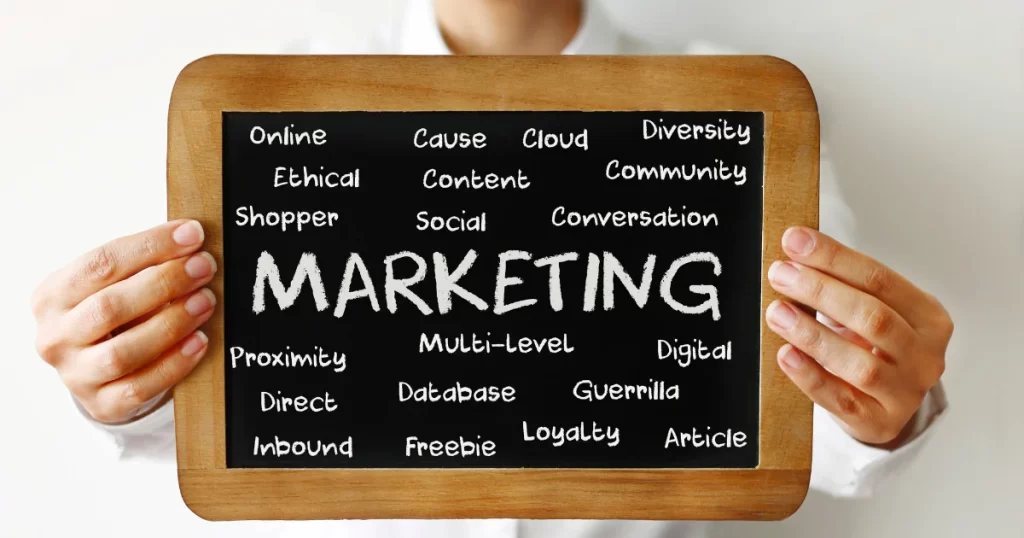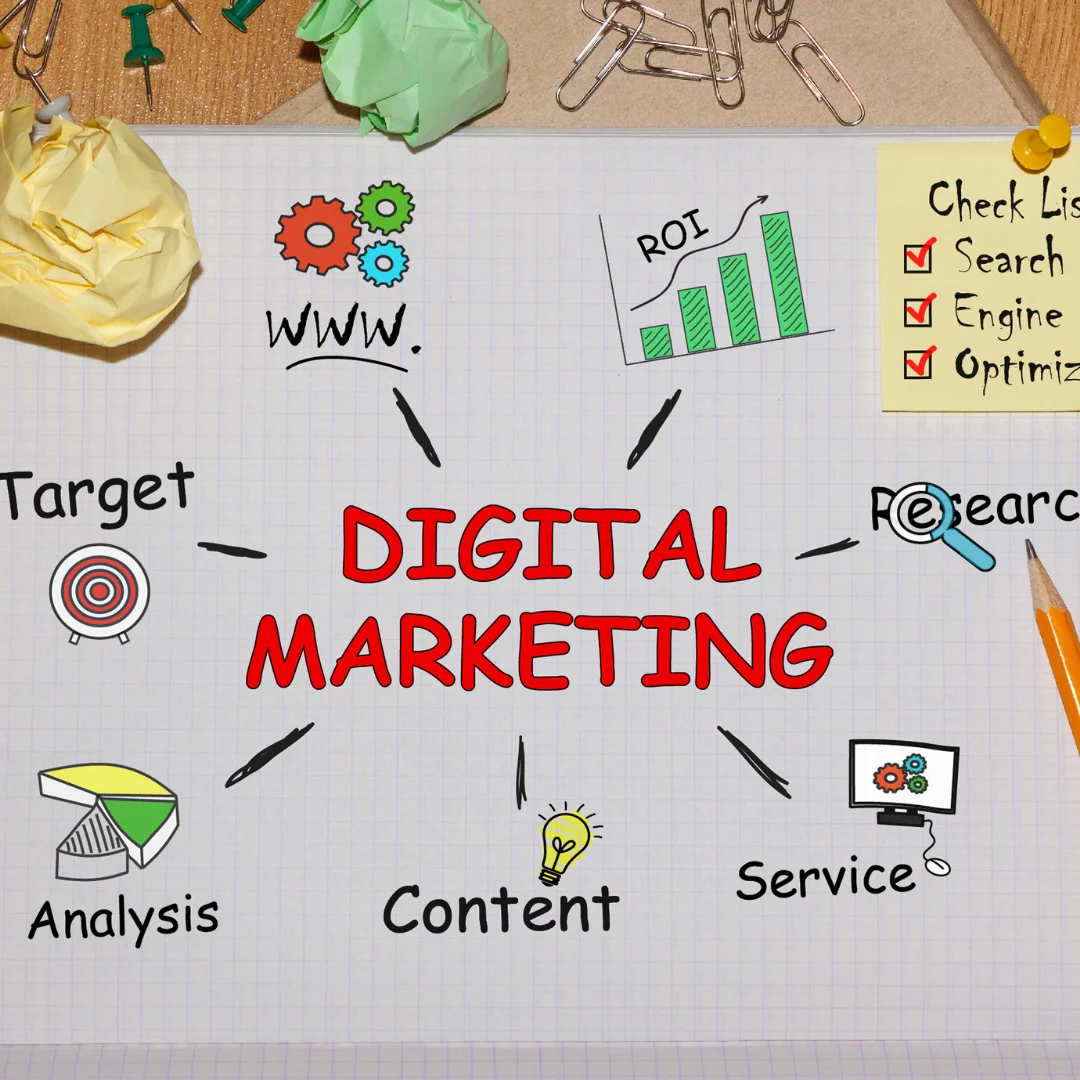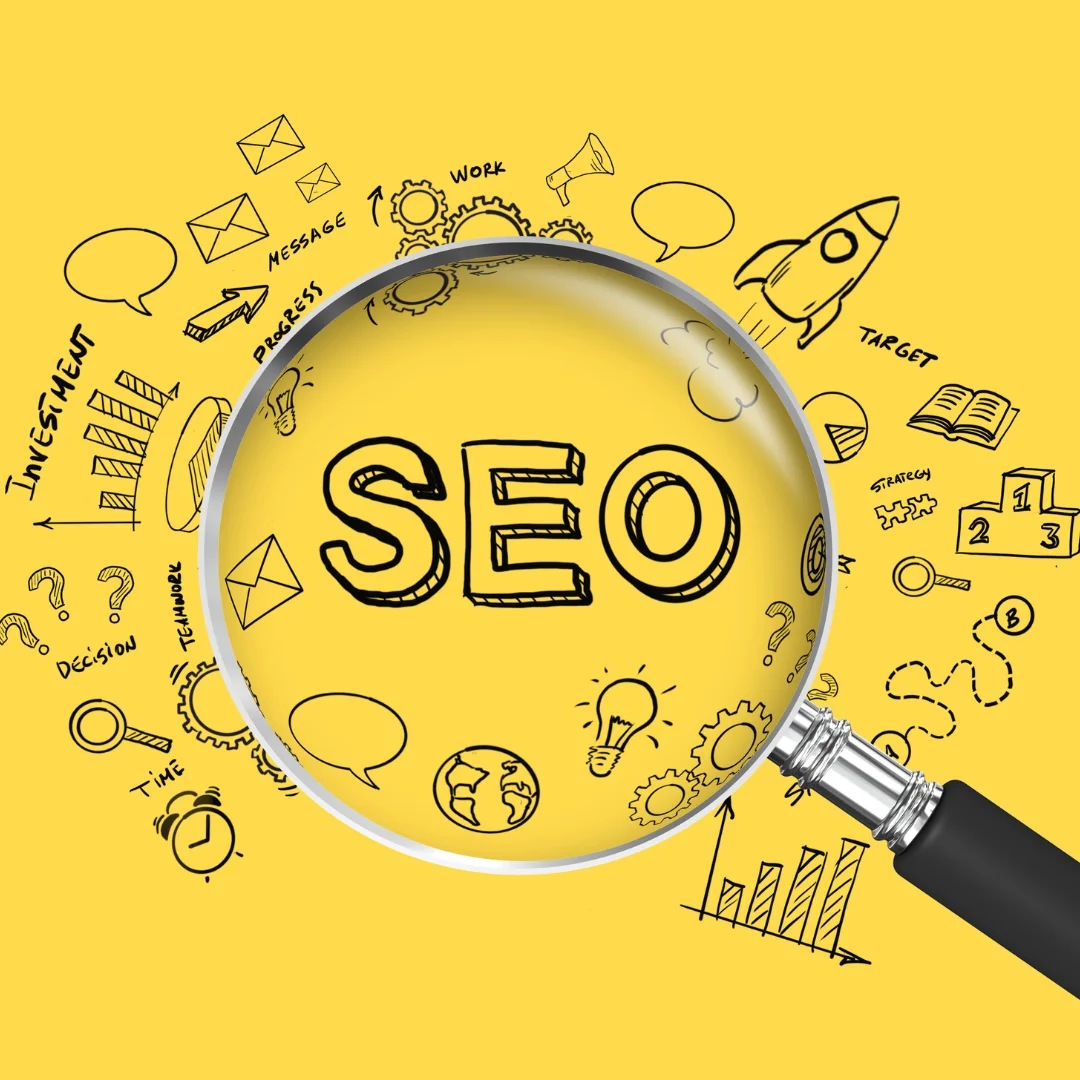Marketing is a fundamental activity that drives the growth of any business by connecting a company’s products or services with potential customers. Simply put, marketing is the process of promoting, selling, and distributing a product or service to a target audience. It goes beyond advertising and sales—it includes understanding consumer behavior, identifying market needs, and building relationships that foster brand loyalty. At its core, marketing is about delivering the right message to the right people at the right time, while continuously adapting to changes in the market.
The importance of marketing in business cannot be overstated. It helps companies raise brand awareness, attract new customers, and retain existing ones. A well-executed marketing strategy leads to higher sales, better customer satisfaction, and a strong competitive advantage.
As Seth Godin, a well-known marketing expert, says, “Marketing is no longer about the stuff that you make but about the stories you tell.” His quote underscores that marketing is about creating value and building trust with consumers through meaningful storytelling.
The Evolution of Marketing Practices

Marketing has evolved significantly over the years, shifting from traditional methods to a more digitally-focused approach. This evolution has been driven by technological advancements, changes in consumer behavior, and the rise of the internet.
Traditional Marketing
In the early days, traditional marketing methods such as print ads, billboards, radio, and TV commercials were dominant. These channels allowed businesses to reach a broad audience, but they lacked precision and were often expensive. Although these methods are still in use, their effectiveness has diminished in comparison to modern techniques.
Digital Marketing
With the advent of the internet, marketing practices took a turn toward digital channels. Digital marketing includes email campaigns, social media, content marketing, and search engine optimization (SEO), all of which provide businesses with cost-effective and targeted ways to reach their audiences. Technology allows marketers to collect data on consumer behavior, preferences, and engagement, enabling more personalized and effective marketing strategies.
The ability to track and measure campaign performance in real time has transformed how companies approach their marketing efforts. According to a study by HubSpot, “Businesses that adopt digital marketing strategies see 2.8 times better revenue growth than those who don’t.”
Understanding the Two Main Types of Marketing

When discussing marketing, it’s essential to differentiate between its two main types: traditional marketing and digital marketing. These two broad categories encompass all the methods businesses use to promote their products or services. Each has its strengths and challenges, and businesses often use a combination of both to achieve their goals, depending on their audience, industry, and marketing objectives.
Let’s take a deep dive into each one, understand their differences, and analyze how they can be effectively leveraged.
Traditional Marketing Strategies
Traditional marketing refers to any type of promotion, advertisement, or campaign that has been used over the past several decades. These strategies focus on offline channels and are typically more expensive than digital methods but have a broad reach. Traditional marketing often works best for building long-term brand awareness and establishing a company’s presence in a saturated market.
Examples of Traditional Marketing Strategies
Here are some of the most commonly used traditional marketing strategies that still play a significant role today:
- Advertising (TV, Radio, Print)
Advertising through television, radio, and print publications is a time-tested method. TV commercials are great for creating emotional connections with viewers, while radio ads capture listeners on the go. Print ads, whether in newspapers, magazines, or billboards, help maintain visibility in highly trafficked areas. Example: Coca-Cola often uses mass advertising during events like the Super Bowl to increase brand awareness. - Event Marketing (Trade Shows, Product Launches)
Event marketing allows businesses to connect face-to-face with potential customers. Trade shows, exhibitions, and product launches create opportunities for direct interaction, feedback collection, and personal engagement. Example: Apple’s product launches generate huge buzz, as they combine media events with high-profile product demonstrations. - Direct Mail Campaigns
Direct mail campaigns involve sending brochures, catalogs, postcards, or personalized letters directly to potential customers. While many consider this an outdated approach, it can be highly effective when targeting a specific demographic. Example: Real estate agents often send personalized postcards to homeowners in a targeted neighborhood.
Pros and Cons of Traditional Marketing
Traditional marketing strategies have their unique advantages and disadvantages, depending on the goals of your campaign. Let’s look at these in more detail:
| Strategy | Pros | Cons |
|---|---|---|
| Advertising | Broad reach, especially through TV/radio | High cost, limited targeting |
| Event Marketing | Personal interaction, immediate feedback | Expensive, limited to geographical areas |
| Direct Mail | Personalized approach, tangible materials | Low response rates, costly production |
Analysis of Traditional Marketing
Traditional marketing strategies tend to work best for businesses that want to reach a wide audience. For example, large companies like fast food chains, car manufacturers, and major retailers still heavily rely on TV, radio, and billboard advertising because it allows them to communicate with millions of consumers at once.
However, the biggest challenge with traditional marketing is that it’s difficult to measure results. While companies can estimate how many people saw their TV ad or passed by their billboard, tracking the direct impact on sales or customer engagement is not as straightforward as it is with digital marketing.
Additionally, traditional marketing can be expensive, especially for smaller businesses with limited budgets. For example, a 30-second TV commercial during prime time can cost thousands (or even millions) of dollars, making it an unrealistic option for many small businesses. Despite these challenges, traditional marketing continues to be an essential part of any comprehensive marketing strategy.
Digital Marketing Strategies

As technology has evolved, so has the world of marketing. Digital marketing is a much newer, yet highly effective approach to promoting products or services. It focuses on online platforms and offers a more cost-effective way to reach specific audiences.
Digital marketing allows businesses to engage with their audience in real-time, and track campaign performance through data analytics. This enables companies to optimize their strategies and tailor their messaging to better meet their customers’ needs.
Examples of Digital Marketing Strategies
Below are some of the most effective digital marketing strategies:
- Content Marketing
Content marketing focuses on creating valuable, relevant, and informative content to attract and engage an audience. This content can include blog posts, infographics, videos, eBooks, and more. The goal is to position the brand as a thought leader and provide solutions to consumer problems. Example: HubSpot’s blog posts on digital marketing strategies attract businesses by offering expert advice on SEO, lead generation, and email marketing. - Email Marketing Campaigns
Email marketing involves sending targeted messages to a list of subscribers who have expressed interest in your brand. Email marketing is often used for newsletters, promotions, or personalized offers. When done correctly, it can foster stronger relationships with your audience and increase conversions. Example: Amazon sends personalized email recommendations based on a customer’s past purchases. - Social Media Marketing
Social media marketing involves leveraging platforms like Facebook, Instagram, Twitter, and LinkedIn to engage with audiences and promote products or services. Social media ads can be targeted by demographics, location, interests, and even behavior. Example: Nike uses Instagram to showcase its latest products and engage with its audience through stories, posts, and influencer partnerships.
Pros and Cons of Digital Marketing
Digital marketing has many advantages over traditional methods, but it also comes with its own set of challenges. Here’s a closer look:
| Strategy | Pros | Cons |
|---|---|---|
| Content Marketing | Builds long-term relationships, improves SEO | Time-consuming to produce quality content |
| Email Marketing | Highly targeted, measurable, cost-effective | Over-saturation can lead to unsubscribes |
| Social Media Marketing | Real-time engagement, highly targeted campaigns | Requires constant management, algorithms change |
Analysis of Digital Marketing
Digital marketing is highly effective for reaching a targeted audience. It allows businesses to track and analyze every aspect of their campaign. Metrics like click-through rates, engagement rates, and conversions provide invaluable insights, enabling marketers to fine-tune their strategies for optimal results.
For example, if a company notices that its email marketing campaign has a low open rate, they can test different subject lines, adjust the time the emails are sent, or further segment its audience to improve performance.
However, one of the downsides to digital marketing is the constant change in platform algorithms. Social media platforms like Facebook and Instagram frequently update their algorithms, which can affect the visibility of posts and ads. This means marketers need to stay up-to-date with the latest trends and continually adjust their strategies to remain competitive.
Moreover, while content marketing is incredibly effective for long-term relationship building, it requires consistent effort. Creating high-quality content that resonates with the audience can be time-consuming and labor-intensive.
Despite this, businesses that invest in content marketing see tremendous rewards in brand authority and search engine visibility.
Traditional Vs. Digital Marketing: A Comparative Table
Both traditional and digital marketing offer valuable tools for businesses. Below is a side-by-side comparison of the two to highlight their key differences and use cases:
| Aspect | Traditional Marketing | Digital Marketing |
|---|---|---|
| Reach | Broad, often global, but not as targeted | Highly targeted, can be global or local |
| Cost | Typically expensive (e.g., TV ads) | Cost-effective, scalable (e.g., PPC ads) |
| Measurability | Difficult to track exact results | Easily measurable through analytics |
| Audience Interaction | One-way communication | Two-way communication with real-time engagement |
| Flexibility | Less flexible, campaigns take time to adjust | Extremely flexible, campaigns can be optimized instantly |
The Four Ps: A Framework for Successful Marketing Campaigns

The Four Ps of marketing—Product, Price, Place, and Promotion—are the cornerstones of any successful marketing strategy. This simple yet powerful framework helps businesses define their marketing mix and ensures that their product or service aligns with consumer needs and market demands. By understanding and optimizing these four components, businesses can craft a holistic approach to achieving their goals, whether it’s boosting sales, building brand recognition, or entering new markets.
Let’s explore each of the Four Ps in detail and how they contribute to a successful marketing campaign.
1. Product: Meeting Consumer Needs Through Innovation
The product is the most important element of the Four Ps. Without a quality product that meets consumer needs, no amount of promotion or competitive pricing will drive long-term success. A product should solve a problem or fulfill a need in a way that is innovative, unique, or more effective than alternatives.
Product Differentiation Strategies
In today’s competitive market, simply having a great product is often not enough. Companies must continually innovate to differentiate themselves from competitors. This differentiation could be in the form of superior design, unique features, higher quality, or even exceptional customer service.
Example:
Apple is a prime example of a company that excels at product differentiation. Apple’s focus on innovation has helped it consistently stay ahead in the consumer electronics market. The iPhone revolutionized the smartphone industry, not just because of its sleek design but also due to its intuitive user interface, superior app ecosystem, and continual hardware advancements. The MacBook, with its clean aesthetic, powerful processing, and smooth integration with other Apple products, exemplifies how Apple’s attention to product innovation keeps it a market leader.
Product differentiation can take many forms, such as:
- Design Innovation: Creating visually appealing, user-friendly products.
- Technological Advances: Incorporating the latest technology to stay ahead of competitors.
- Unique Features: Offering exclusive features that are hard to find elsewhere.
Examples of Product Differentiation Strategies
| Company | Product | Differentiation Strategy |
|---|---|---|
| Apple | iPhone | Sleek design, cutting-edge technology, ecosystem integration |
| Tesla | Model S | Electric vehicle with autonomous driving capabilities |
| Dyson | Air Purifiers | Advanced filtration technology and sleek design |
Ultimately, understanding consumer needs and consistently innovating allows businesses to create products that resonate with their target audience, driving long-term success in their marketing efforts.
2. Price: Setting Competitive Prices That Drive Sales
Setting the right price for a product can make or break its success in the market. A well-thought-out pricing strategy balances the need to remain competitive while ensuring profitability. Companies often use various pricing strategies, such as cost-plus pricing, penetration pricing, or value-based pricing, depending on the product and market conditions.
Pricing Strategies Based on Market Analysis
Conducting thorough market research is critical when determining how to price a product. Businesses must consider factors such as consumer demand, competitor pricing, and overall market conditions.
Example:
Amazon’s dynamic pricing model has set it apart from competitors. Amazon constantly adjusts its prices based on real-time data, including demand, competitors’ pricing, and even individual customer behavior. This approach ensures that Amazon remains competitive, offers the best possible deals to consumers, and maximizes its profits. For example, during the holiday shopping season, prices on popular items may fluctuate several times a day based on demand trends and competitor pricing.
Pricing strategies can be broken down into:
- Dynamic Pricing: Adjusting prices based on real-time factors like demand and competition.
- Penetration Pricing: Setting lower prices to enter a new market and gain market share quickly.
- Value-Based Pricing: Pricing a product based on the perceived value to the consumer rather than the cost of production.
Examples of Pricing Strategies
| Company | Pricing Strategy | Description |
|---|---|---|
| Amazon | Dynamic Pricing | Adjusts prices based on demand, competition, and behavior |
| Netflix | Subscription Model | Offers tiered pricing based on different service levels |
| IKEA | Cost-Plus Pricing | Sets prices based on cost of production + profit margin |
Pricing should align with a company’s overall marketing strategy and brand positioning. A premium product like an iPhone, for instance, will often carry a higher price to reflect its premium status, whereas mass-market products may rely on lower pricing to appeal to a larger audience.
3. Place: Ensuring Easy Access to Products for Customers Anywhere, Anytime
Place refers to the distribution channels a business uses to make its product accessible to customers. The effectiveness of a company’s distribution strategy directly impacts its ability to reach its target audience. Ensuring that customers can easily access products, whether through physical stores or online platforms, is critical to a successful marketing campaign.
Distribution Channels for Maximizing Product Accessibility
Choosing the right distribution channels can make a significant difference in how well a product performs in the market. Companies must determine where their target customers shop and ensure their products are available in those locations. This could include physical retail stores, online platforms, or a combination of both.
Example:
Coca-Cola is a master of distribution. The company’s products are available in nearly every country worldwide, including remote locations. Its extensive network of distributors, bottlers, and retailers ensures that Coca-Cola products are within easy reach of consumers at all times, whether it’s in a restaurant, a vending machine, or a convenience store. This broad distribution network has played a key role in Coca-Cola’s success and dominance in the beverage market.
Businesses can choose from several distribution strategies:
- Direct Distribution: Selling directly to consumers via e-commerce platforms or company-owned stores.
- Indirect Distribution: Partnering with third-party retailers or wholesalers to distribute products.
- Hybrid Distribution: Combining both direct and indirect distribution channels to maximize reach.
Examples of Distribution Channels
| Company | Distribution Channel | Description |
|---|---|---|
| Coca-Cola | Indirect Distribution | Extensive global network of retailers and bottlers |
| Amazon | Direct Distribution (E-commerce) | Direct online sales through its e-commerce platform |
| Nike | Hybrid Distribution | Sells through both Nike-owned stores and third-party retailers |
The key to a successful distribution strategy lies in understanding where your customers are and ensuring that your products are available in those places. In today’s digital world, many companies use online and offline channels to reach the widest possible audience.
4. Promotion: Communicating Value Propositions Effectively Through Integrated Marketing Communications Strategies
Promotion refers to how a company communicates the value of its product or service to consumers. A successful promotional strategy will highlight the product’s unique selling points (USPs) and differentiate it from competitors. Integrated marketing communications involve using multiple channels—such as TV, social media, and email—to create a consistent message that resonates with the target audience.
Integrated Communications Strategies
An integrated marketing communications strategy ensures that a company’s message is consistent across all channels. This creates a seamless experience for consumers, no matter how they encounter the brand—whether it’s through a social media post, a TV commercial, or an email newsletter.
Example:
Nike’s “Just Do It” campaign is one of the most iconic examples of an integrated marketing strategy. Launched in 1988, this campaign used a combination of TV commercials, print ads, billboards, and digital media to convey a unified message: that anyone can achieve greatness with determination and the right gear. By using multiple platforms and consistently reinforcing the same message, Nike was able to build brand loyalty and boost sales across its product lines.
Promotional strategies can include:
- Advertising: Paid media such as TV commercials, digital ads, and print.
- Public Relations: Building a positive brand image through media coverage and events.
- Social Media Marketing: Engaging with audiences directly through platforms like Instagram and Facebook.
Examples of Promotion Strategies
| Company | Promotional Strategy | Description |
|---|---|---|
| Nike | Integrated Campaign (Just Do It) | Unified message across TV, social media, and print |
| Coca-Cola | TV and Digital Ads | High-impact advertising during global events like the Olympics |
| Starbucks | Social Media & Email Marketing | Engages customers through loyalty programs and online content |
Effective promotion helps to build brand recognition, engage consumers, and ultimately drive sales. By integrating their marketing efforts, companies can ensure their message is clear, consistent, and compelling.
7 Best Practices for Effective Marketing in Today’s Digital Age

Success in modern marketing requires adapting to the ever-evolving digital landscape. Businesses must embrace best practices that reflect shifts in technology, consumer behavior, and overall market dynamics. Below are seven best practices that can help companies enhance their digital marketing strategies, remain competitive, and drive results.
1. Know Your Audience Inside and Out
Understanding your target audience is the cornerstone of any successful marketing strategy. Without knowing who you’re targeting, it’s nearly impossible to craft messages, create content, or design campaigns that resonate. The key is to gather and analyze data to build a clear picture of your audience’s demographics, behavior, needs, and preferences.
How to Understand Your Audience Better
Using data and insights, companies can develop buyer personas, which help in segmenting audiences based on characteristics like:
- Demographics: Age, gender, income, education level, etc.
- Behavioral Data: Buying habits, online activity, product preferences.
- Psychographics: Interests, lifestyle, values, and pain points.
Example:
Netflix uses viewer data to understand its audience’s preferences and suggests personalized content. By analyzing viewing history, ratings, and user behavior, Netflix provides recommendations tailored to individual tastes, which helps increase engagement and retention.
Tips for Knowing Your Audience
- Conduct surveys and collect customer feedback.
- Use analytics tools to track website visitor behavior.
- Monitor social media engagement to learn more about your followers.
Audience Segmentation Table
| Audience Segment | Demographics | Behavior |
|---|---|---|
| Young Adults (18-25) | Tech-savvy, social media users | Heavy mobile device use, preference for apps |
| Working Professionals (30-45) | High income, educated | Interested in efficiency tools, time-saving content |
| Retirees (60+) | Homeowners, leisure-focused | Enjoys informative content, slower adoption of new technology |
2. Focus on Content Marketing
Content marketing is at the heart of digital marketing. Producing high-quality, valuable content attracts and engages potential customers, helps build trust, and boosts search engine rankings. Whether it’s blogs, videos, infographics, or podcasts, content that informs, entertains, or solves a problem will always stand out.
Content That Drives Engagement
To create effective content, businesses should focus on addressing the audience’s needs and pain points while also optimizing for SEO. Consistent, engaging content builds credibility and nurtures long-term relationships with consumers.
Example:
HubSpot, a leader in inbound marketing, uses its blog to provide detailed guides, how-tos, and insights into topics like sales, CRM, and marketing automation. By offering helpful content for free, HubSpot has positioned itself as a trusted authority in the industry, driving leads to its software offerings.
Types of Content to Focus On
- Educational Content: Blog posts, how-to guides, whitepapers, and case studies.
- Visual Content: Infographics, explainer videos, and webinars.
- Interactive Content: Quizzes, surveys, and tools.
Content Marketing Table
| Content Type | Purpose | Examples |
|---|---|---|
| Blog Posts | Drive traffic, build authority | SEO-optimized articles |
| Videos | Increase engagement | Product demos, customer testimonials |
| Infographics | Visual learning, data sharing | Simplified charts and data visualizations |
3. Leverage Social Media Channels
Social media provides a powerful platform for marketing, enabling businesses to connect with their audience in real time, share content, and build communities. An effective social media strategy helps enhance brand visibility, drive engagement, and foster direct interaction with consumers.
Choosing the Right Platforms
Not every social media platform is right for every business. It’s essential to know where your target audience spends their time online and tailor your approach to those platforms. For example, a B2B company might focus on LinkedIn for its professional audience, while a lifestyle brand may prioritize Instagram or TikTok.
Example:
Starbucks uses social media creatively, engaging its audience with user-generated content, seasonal campaigns, and interactive polls on platforms like Instagram and Twitter. By creating fun and relatable content, Starbucks fosters customer loyalty and boosts engagement.
Best Practices for Social Media Marketing
- Develop a consistent posting schedule.
- Engage with your followers by responding to comments and messages.
- Use hashtags and trending topics to expand your reach.
Social Media Platforms Table
| Platform | Target Audience | Best Content Types |
|---|---|---|
| Millennials, Gen Z | Visual content, short videos, stories | |
| Professionals, B2B | Thought leadership articles, job postings | |
| TikTok | Younger audiences (13-30) | Short-form videos, viral challenges |
4. Utilize Data and Analytics
In today’s digital age, data-driven marketing is non-negotiable. By analyzing data, businesses can measure the success of their campaigns, make informed decisions, and fine-tune their marketing strategies. Analytics helps businesses track performance and customer engagement, ensuring that marketing efforts are optimized for the best results.
Key Metrics to Track
To effectively leverage analytics, businesses should focus on key performance indicators (KPIs) such as:
- Website Traffic: Measures the number of visitors and how they found your website.
- Conversion Rates: The percentage of visitors who take a desired action (e.g., making a purchase, signing up for a newsletter).
- Engagement Metrics: Likes, shares, comments, and time spent on content.
Example:
Google Analytics provides detailed insights into how users interact with a website. Businesses can track page views, bounce rates, and traffic sources to understand where to optimize for better performance.
Important Analytics Tools
- Google Analytics: Tracks website traffic and user behavior.
- Hootsuite Analytics: Measures social media engagement and growth.
- HubSpot Analytics: Monitors inbound marketing campaigns, lead generation, and email performance.
5. Embrace Automation
Automation tools have transformed marketing by enabling businesses to automate repetitive tasks, personalize content, and nurture leads more efficiently. Marketing automation helps save time, improve accuracy, and create more personalized customer experiences.
Benefits of Marketing Automation
Using automation for tasks like email marketing, lead nurturing, and social media posting allows businesses to focus on strategy while still engaging with their audience.
Example:
Mailchimp is a popular automation tool for small and large businesses alike. By automating email campaigns, Mailchimp allows businesses to segment their audience, send personalized content, and track open rates and click-through rates without manual effort.
Marketing Automation Tools Table
| Tool | Functionality | Use Case |
|---|---|---|
| Mailchimp | Email marketing automation | Automated email sequences for lead nurturing |
| Hootsuite | Social media management | Schedules and posts content across platforms |
| HubSpot CRM | Lead management and sales tracking | Automates workflows, tracks customer interactions |
6. Prioritize Mobile Marketing
With over half of global web traffic coming from mobile devices, optimizing marketing efforts for mobile is more critical than ever. Mobile-friendly websites, ads, and content ensure that businesses can reach consumers where they spend most of their time.
Mobile-First Design
When optimizing for mobile, businesses need to focus on:
- Responsive Design: Ensures that a website adjusts to fit screens of all sizes.
- Mobile-Optimized Ads: Create ads that are easy to view and engage with on smartphones.
Example:
Domino’s Pizza invested heavily in its mobile app and website, allowing customers to order food with just a few taps. The company’s mobile-first approach helped drive significant increases in mobile orders and sales.
Best Practices for Mobile Marketing
- Use short, concise text for mobile ads and landing pages.
- Ensure fast loading times for mobile websites.
- Design with touchscreens in mind, including easy-to-click buttons.
Mobile Marketing Table
| Strategy | Description | Example |
|---|---|---|
| Responsive Website Design | Adapts website layout to fit any screen size | E-commerce websites like Amazon |
| SMS Marketing | Sends promotions or updates via text message | Flash sale alerts from retail brands |
| Mobile Ads | Optimized ads for mobile platforms | Instagram Stories ads |
7. Continuously Test and Optimize
Marketing is not a set-it-and-forget-it process. Businesses must regularly test and optimize their strategies to stay ahead of trends and ensure maximum effectiveness. A/B testing allows companies to experiment with different messaging, creatives, or strategies to see what resonates best with their audience.
Why Testing Is Crucial
By continuously testing different versions of a campaign, businesses can improve conversion rates, reduce ad spend, and increase engagement. Small changes, like tweaking headlines, call-to-action buttons, or images, can lead to significant improvements in performance.
Example:
Spotify uses A/B testing to improve its user experience. The company frequently tests different versions of its interface and ads to see which designs drive higher engagement and satisfaction among users.
Best Practices for Testing and Optimization
- Start by testing one element at a time (e.g., subject lines in email campaigns).
- Track and measure results over time to ensure improvements are sustainable.
- Use analytics tools to make data-driven decisions.
Conclusion
Implementing these 7 best practices can help businesses stay competitive in the digital age. By knowing your audience, focusing on content, leveraging social media, utilizing data, embracing automation, prioritizing mobile, and continuously testing, you’ll be better equipped to create marketing strategies that deliver results.





